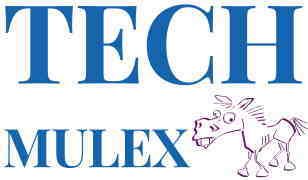If your business works with web pages or processes tons of data, you should have a good knowledge of servers whether you are an IT staff or not. There are public and private servers, but some businesses operate their own due to the sensitive nature of the data they handle. In this article, we will explain how they work, their components, and the types that are available.
What is a Server?
A server is any device that can share and store information. It can also request information from another system. It is a processing device that can pass as a virtual storehouse or hardware. The original server was the mainframe computer of the 50s and 60s. But the history of modern servers started with the rack-mounted and web specs in the 90s.
How Does a Server Work?
A server houses large data that businesses can access through the internet or an internal network. The user makes a request, and then the device retrieves the required file from its storehouse or other data sources. It works with a computer’s operating system (OS) to respond to requests. It can also be used in verifying user identity before granting access to the organization’s network.
Components of Server Hardware
The major components are
- Motherboard
- Central processing unit (CPU)
- Memory
- Storage
Motherboard
The motherboard is the central nervous system of the server. It provides a point of attachment for external devices and other system components. Therefore, the size of a motherboard will determine the number of devices and components that a server will have.
CPU
The CPU is also known as the processor. It is found on the motherboard and controls how the server functions. The components of a CPU are cache memory, register, ALU (arithmetic and logic unit), and FPU (floating-point unit).
Memory
The main system memory is the Random Access Memory (RAM). It holds any data that is currently in use so the system can quickly retrieve it. It also contains applications and the operating system.
Storage
A server can use a hard drive, an SSD (solid-state drive), or both for storage. Devices that hold big data require several hard drives.
Types of Server Hardware
There are 4 main types:
- Rack
- Tower
- Blade
- Mainframe
Each serves its own purpose. Therefore, the type you choose for your business depends on how the device functions.
Rack Servers
They are mounted on racks and are very useful in all computing tasks and do not occupy a lot of space. They are constructed in such a way that you can easily remove any component you do not need immediately.
The rack that houses the device stands vertically such that you can add other servers from various vendors. Since the components are stacked tightly, they tend to heat up faster. Therefore, a dedicated cooling system is required for efficiency. You may want to visit https://www.easytechjunkie.com/ to learn more about rack servers.
Tower Servers
They come in form of a standalone cabinet and are quite cheap compared to other options. This makes them suitable for small businesses. However, they are large-sized and take up much floor space.
Because their components are not densely packed, they cool faster than other servers. The design also allows you to install other components like a hard drive.
Blade Servers
These are single slim servers that house several thin, modular circuit boards. Each blade is a server that is assigned to a particular application. Due to their dedicated nature, admins can control how users access them and how data is being transferred.
They have a high processing speed compared to other servers. Each blade can be cooled individually, which means reduced power use and less wiring. When it comes to repair and maintenance, the blades do not pose many challenges.
Mainframes
Mainframes are very large computers. Their designs are sophisticated, and they can perform various tasks. You can also swap their components and configure them to your taste.
These servers run on a unique OS, which makes for a high-performance capacity. They are used in organizations that deal with a large amount of data such as financial service firms. Usually, such organizations require secure and reliable computing, which is what the mainframe offers.
Although mainframes are more expensive than the other 3 servers, their resilience is second to none. Because of their size, maintenance comes at a price. You can click here to read more about mainframes.
Other types of servers include:
- FTP (file transfer protocol)
- DNS (domain name system)
- Gaming server
Closing Thoughts
Each type of server has its unique design, function, and maintenance. As with all devices, maintenance is the key to ensuring efficiency and durability. If you do not manage your server properly, it becomes vulnerable to cyber-attacks.
Also, insufficient cooling can shorten the lifespan of devices. Therefore, ensure each component is receiving the right amount of air required for cooling.
